Sex, spies and voodoo: Graham Greene's most remarkable adventures

No other author saw as much of the world as Graham Greene. To mark the publication of a major new biography, Chris Moss traces the fleet footsteps of the author of The Power and the Glory and Our Man in Havana
For Graham Greene, travel was almost as important as writing. He liked to spend time in untouristy places like Liberia, Haiti and French Indochina. One of his earliest novels, Stamboul Train, was set on the Orient Express. He titled a memoir Ways of Escape. He once pitched a book to his publishers involving a Zeppelin flight from Lake Constance to Brazil (a project that never got off the ground).
A major new biography, Russian Roulette, by Richard Greene – no relation – remarks that the author “needed constant stimulation to keep boredom, a debilitating feature of ‘manic depression’ (now known as bipolar illness), at bay.” He describes Greene’s life as “the story of a traveller, whose restlessness caused him to seek out troubled places.”
Much of his fiction unfolds in an imaginative region that’s been dubbed “Greeneland”, encompassing seedy alleys in Brighton, Central American battlefields and colonial backwaters where monsoon rains hammer on tin roofs. No other writer has collected passport stamps like Graham Greene and his books, and life, continue to inspire armchair adventurers to think anew of the world’s borders and badlands. Here’s a sampling of his many wanderings and writings.
Estonia
By 1933, Greene was becoming skilled at scoring foreign commissions. He got the Spectator to send him to Paris to report on the Stavisky Affair. He flew to the Baltic states in May after a visit to a swastika-spattered Berlin. His main motive was to find a 500-year-old brothel reputed to be still operating in Tallinn, but the building had become a chemist’s. He bumped into a vice-consul doubling as an MI6 operative on the plane; such chance encounters were to become routine in Greene’s life and fiction.

Mexico
Heinemann commissioned Greene to write about anticlericalism in Mexico in 1937. After a 56-hour crossing aboard SS Normandie he arrived in New York at the end of January 1938 and took the train to the Mexican border. Richard Greene reports that the author found himself “experiencing, as never before in his life, a sense of religious fervour”. Greene rode by mule to see a Mayan site and zipped around the country on tiny planes. In The Lawless Roads (1939), he wrote, “It’s typical of Mexico, of the whole human race perhaps – violence in favour of an ideal and then the ideal lost and the violence just going on.” The trip inspired The Power and the Glory (1940), one of his masterpieces.
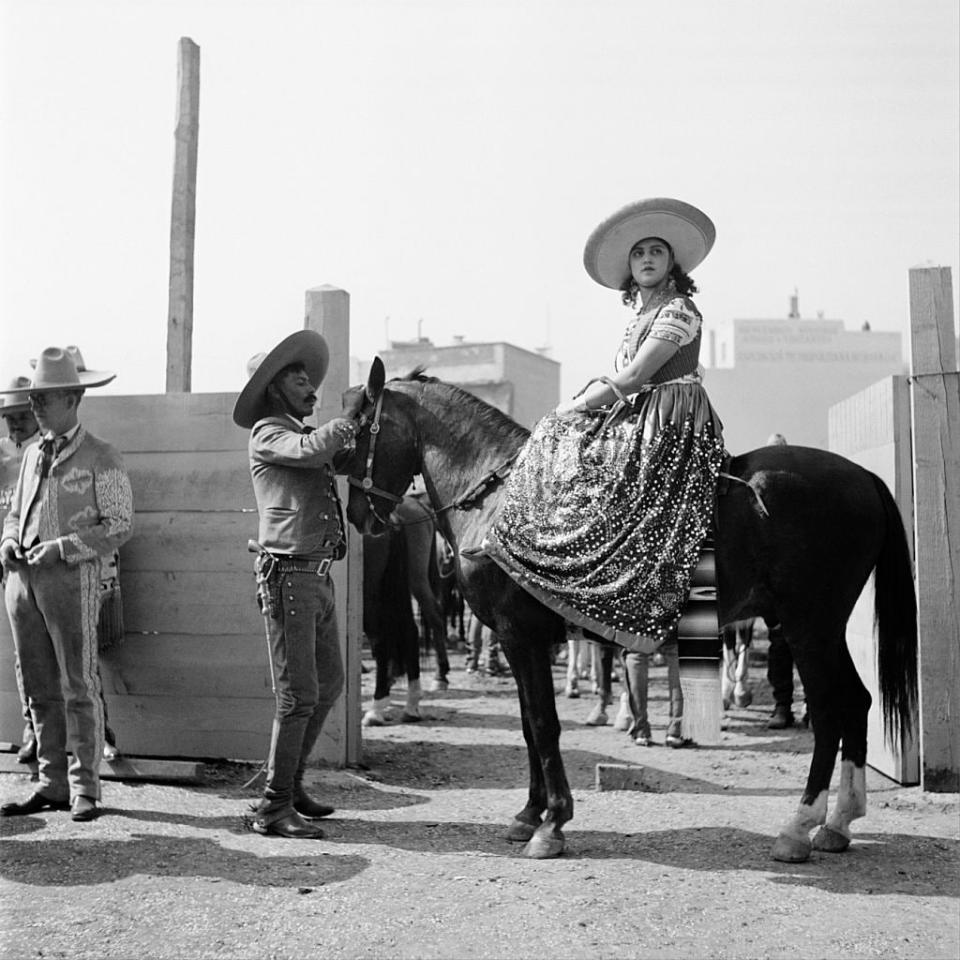
Sierra Leone
Between 1941 and 1944, Greene was MI6 agent 59200 in Freetown, Sierra Leone, charged with monitoring Vichy French troop movements and checking Portuguese ships for commercial diamonds. He took his orders from Kim Philby, a senior figure in counter-intelligence – who would later defect to the USSR. His novel The Heart of the Matter, with its “landscape of baking earth and bleak iron huts”, and its tiresome expats, gestated during his posting. Greene could get soppy about Africa, comparing the shape of the continent to that of the human heart in his first travel book, Journey without Maps, in which he travelled around Liberia on foot. The End of the Affair contains the following outburst: “I have loved no part of the world like this and I have loved no women as I love you. You’re my human Africa. I love your smell as I love these smells. I love your dark bush as I love the bush here, you change with the light as this place does, so that one all the time is loving something different and yet the same.”
Vienna
After the Second World War, Vienna was carved up into Soviet, British, French and American sectors. Greene arrived in February 1948 to research a film idea suggested by producer Alexander Korda (with whom he had made The Fallen Idol). The rubble and ruins left by Allied bombing, combined with the city’s cavernous sewer-system, plus black-market penicillin vendors, shady bars and nightclubs, provided Greene with the moral tension and immoral texture he needed to write The Third Man. “There’s nobody left in Vienna I can really trust,” says the protagonist Harry Lime (played by Orson Welles.) From Vienna, Greene travelled via Prague to Rome, where he met his mistress. With the money he received for the film commission, he bought a villa in Anacapri.
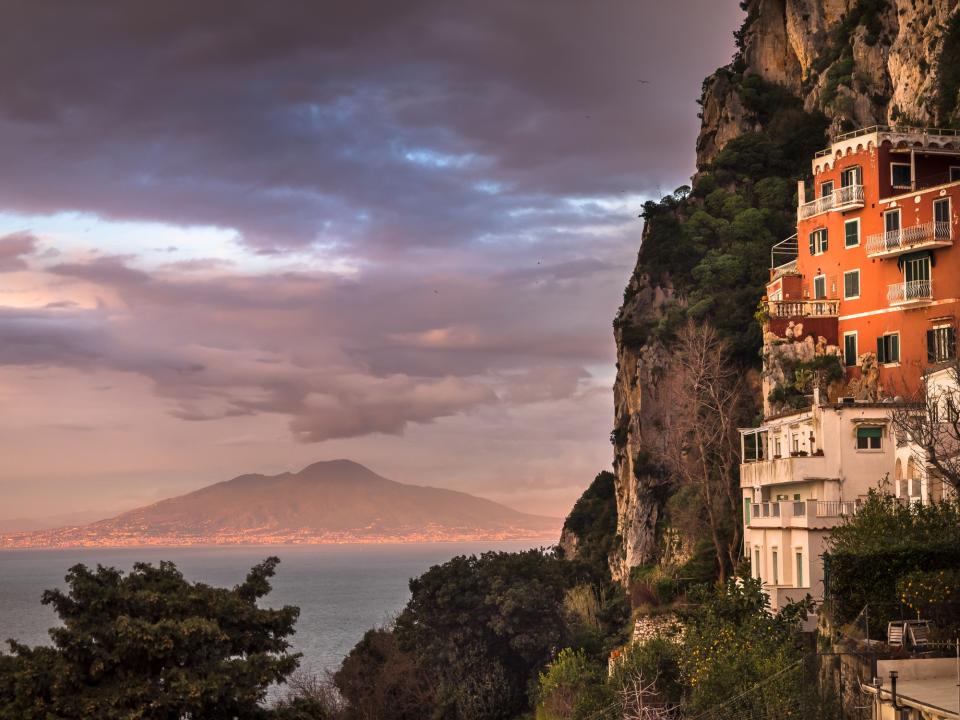
Cuba
In 1954, during one of around a dozen trips to Cuba, Greene wrote to friends that Havana was “quite the most vicious city”. He passed the time watching blue movies, reading pornographic books and also smoked his first joint. Three years later, he found it to be the most violent city; while he was attending a sex show at the Shanghai Theatre, 60 bombs went off in the space of 15 minutes. He visited Cienfuegos and Trinidad before flying to Santiago, carrying a suitcase full of warm clothes for the guerrillas up in the mountains – though there was too much fighting for him to meet them. The turmoil didn’t hinder Greene’s creativity; in June 1958, he delivered the manuscript of Our Man in Havana to his publisher. In August and September of 1966, Greene travelled to the island for this newspaper, striking up a friendship with Fidel Castro and judging the regime to be far more convivial than the “Stalinist capitalism” of the USA.
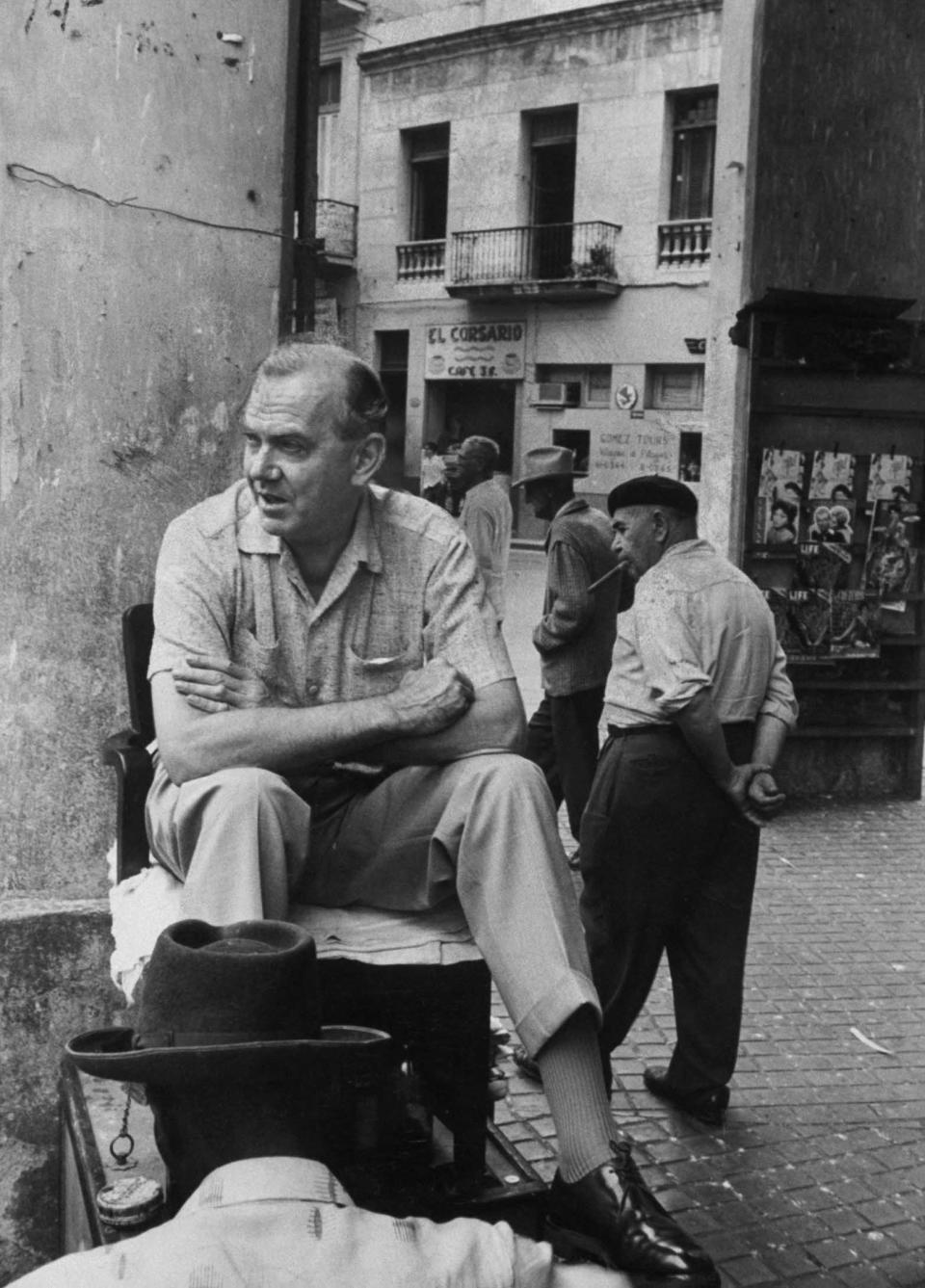
Haiti
Greene spent much of 1954 in Anacapri, Florence and Siena, trying to give up martinis and limit himself to two whiskies before dinner. Perhaps bored of Europe and the (partial) wagon, he visited Haiti in August in the company of director Peter Brook, Brook’s wife – the actress Natasha Parry, and Truman Capote. Greene and Natasha travelled around, and he saw a cockfight and a bloody vodou ceremony featuring a hen (he had a phobia of birds). He returned in 1963, when Haiti was in the iron grip of Papa Doc Duvalier and his murderous Tonton Macoute goon squad; for once, Greene was stricken with fear, calling the country “The Nightmare Republic” in the report he filed for the Sunday Telegraph. Greene started thinking about his novel The Comedians while staying at the Grand Hotel Oloffson, which had just three guests.
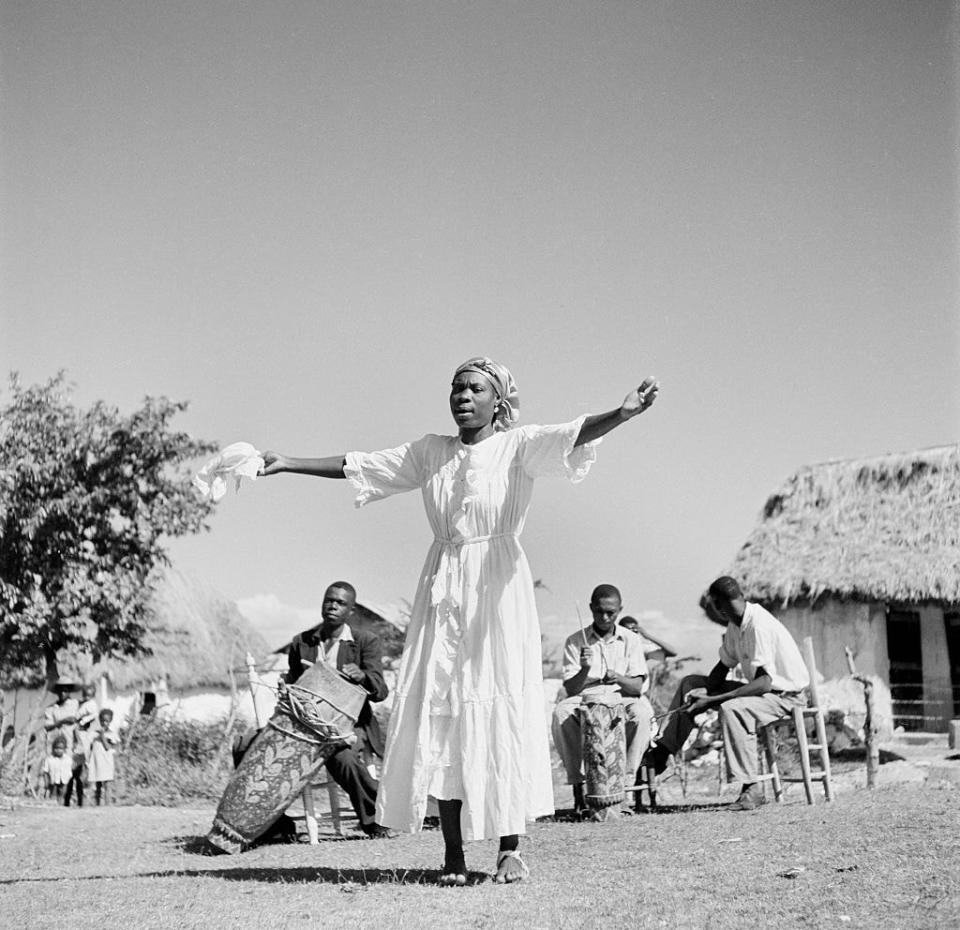
Argentina, Chile and Paraguay
In 1968, Greene travelled to Argentina and spent time with Victoria Ocampo, the Virginal Woolf of Argentine letters. He took a steamboat up the Paraná river and visited the Jesuit missions of Paraguay – then under the US-backed dictatorship of Alfredo Stroessner. On visiting a house surrounded by orange trees, Greene fantasised about one day retiring in Asunción. He returned to Argentina in 1970 and travelled to Corrientes, where he found a political climate – and a brothel – that would provide the backdrop to The Honorary Consul. On a further visit, in 1971, he was charmed by Argentine author Jorge Luis Borges and met president Salvador Allende, the first democratically elected Marxist leader, in Santiago, Chile.
Panama
In 1978, on a third visit to the Central American country, Greene reconnected with his friend, Panamanian dictator Omar Torrijos. Using the latter’s helicopter, he went in search of Sir Francis Drake’s body, reputedly buried at sea in full armour inside a lead coffin. Greene used poems and a bit of casual research rather than scuba equipment and sonar, saying he felt “vibes” when they were getting close to the spot. No body was found, but he enjoyed the hunt and wound down afterwards with drinks. Russian Roulette contains a photograph of Greene holding a planter’s punch while visiting Contadura Island.

Switzerland
The Third Man features one of Greene’s most famous putdowns about a country: “You know what the fellow said – in Italy, for 30 years under the Borgias, they had warfare, terror, murder and bloodshed, but they produced Michelangelo, Leonardo da Vinci and the Renaissance. In Switzerland, they had brotherly love, they had 500 years of democracy and peace – and what did that produce? The cuckoo clock.” While spending the Christmas of 1978 in Jongny on Lake Geneva, where his daughter Caroline lived with her sons, he had the idea for the darkly coming novella Dr Fischer of Geneva or The Bomb Party. Greene and his mistress Yvonne Cloetta moved to Switzerland in spring 1990, so that he could be close to a good hospital and away from noisy Antibes during the summer peak; he died at Vevey on 3 April 1991. There was only one country he considered even more dreary: “The Switzerland of Central America Costa Rica has often been called – a libel on Switzerland”.
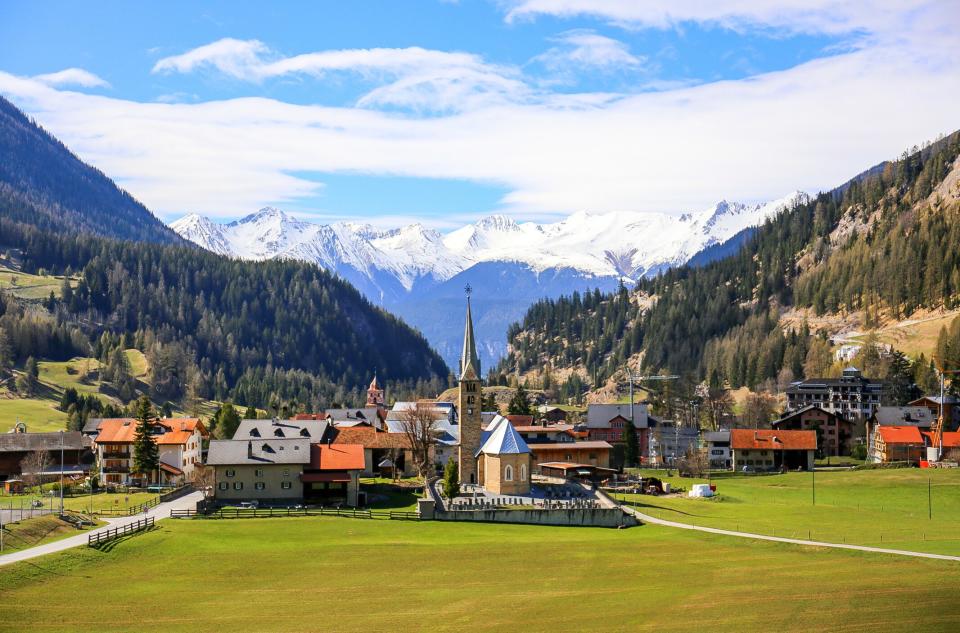
More Travels with Our Graham
Greene lived at Berkhamsted, Oxford, Nottingham, London, Chipping Camden, Sierra Leone, Capri, Paris and Antibes. As well as the countries named above, he visited many others, including Latvia in 1932, Norway and Sweden in 1933, Liberia in 1935, Czechoslovakia in 1948, Hong Kong and Macau in 1951, Malaya and French Indochina in 1952, Kenya in 1954, China in 1957, Jamaica, French Cameroon and the Congo in 1959, Samoa and Tahiti in 1960, East Germany in 1963, Canada in 1964, Dominican Republic in 1965, Israel in 1967, South Africa in 1973, Spain in 1976, Portugal in 1977, Belize in 1978, Nicaragua in 1983 and the USSR in 1987. The dates often correspond with wars, revolutions and other tumults.
Russian Roulette: The Life and Times of Graham Greene by Richard Greene is published by Little Brown, £25


